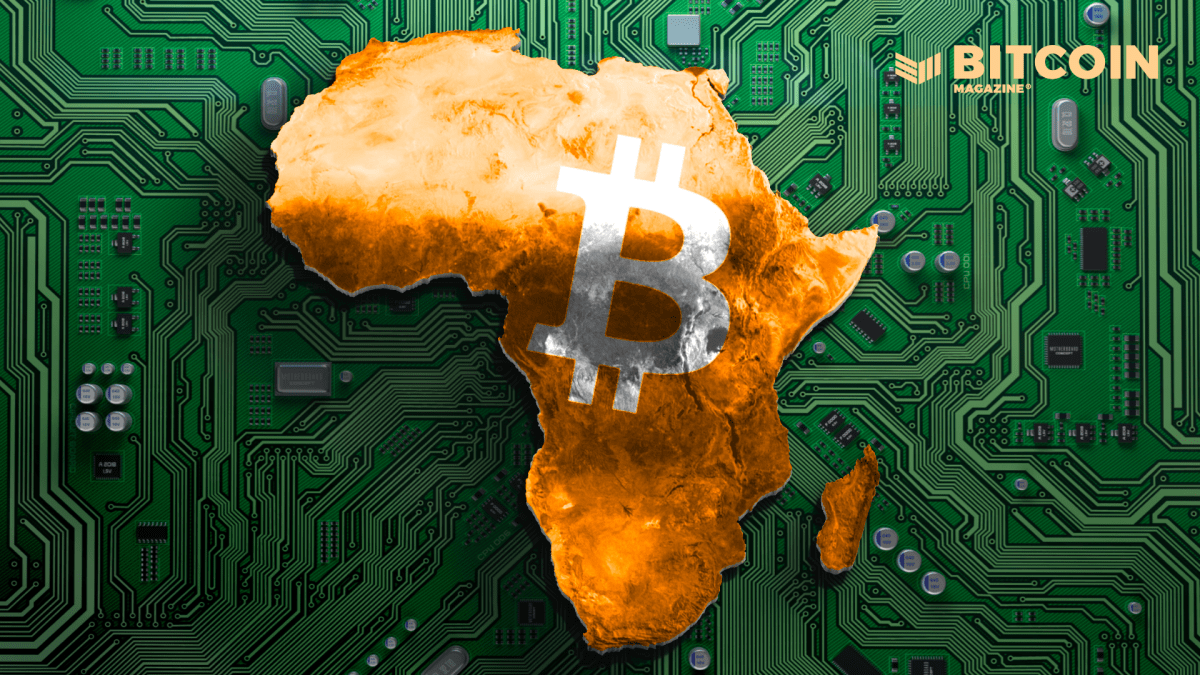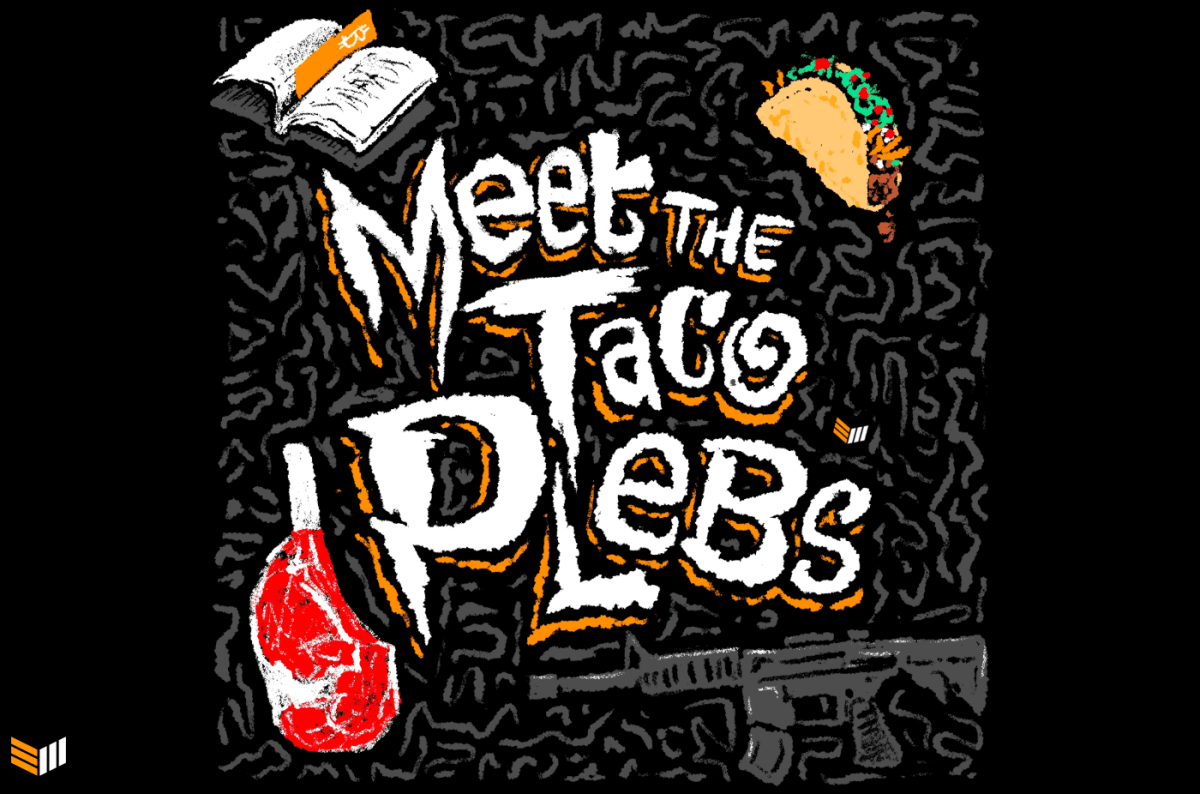Bitcoin-backed credit built with DeFi represents a stronger and more practical vision of “bitcoin free banking” originally described in 2010 by Hal Finney.
This is an opinion editorial by David Seroy, Founder and President of Old North Capital Fund.
It is the author’s opinion that credit-based, bitcoin-backed dollars will act as the bridge connecting bitcoin, dollars, the Lightning Network, validity roll-ups, and elements of free banking in a hyperbitcoinized world.
Bitcoin and the dollar are symbiotic. Like yin and yang, bitcoin and dollars provide balance. On the one hand, bitcoin acts as a counterparty-free, decentralized, scarce, digital bearer asset to hedge against excessive credit creation. On the other hand, the free market has an insatiable desire for issuing credit-based dollars which fill the role of both a ‘stable” unit of account and an elastic monetary layer.
Thus the market has competing desires for both a fixed supply asset, as well as a monetary unit of account which is “stable” and can expand in response to economic demands. This reality leads us to believe the path to hyperbitcoinization will naturally be paved with an array of credit-based, bitcoin-backed dollars underpinned by bitcoin collateral. Nik Bhatia describes a similar vision in his book, “Layered Money.” Put simply, credit money will exist because the market demands it, but it will be backed by and therefore limited by bitcoin’s fixed supply also because the market demands it. The net result is a synergistic fly-wheel will begin to form between the demand for bitcoin and bitcoin-backed dollars.
In 2010, Hal Finney described such a vision where bitcoin-backed banks could “issue their own digital cash currency, redeemable for bitcoins.” This idea was based on George Selgin’s Free Banking research. Eric Yakes summarizes Free Banking in his article “Bitcoin Banking Systems”:
“Imagine a world in which banks were allowed to competitively issue their own private monies and markets were allowed to sort out whether these monies were valuable. This system is built on the assumptions that (1) information transparency is high; (2) it exists within a competitive market environment; and (3) it is subject to minimal regulations. If such a system emerged and was predicated upon voluntary agreement and exchange amongst market actors, who’s to say that it would not be just?”
Unfortunately, none of the three criteria can be met in the existing legacy system, and therefore we are unlikely to ever see a true bitcoin “free banking” revolution via the legacy system. Specifically:
- Information Transparency: Large financial institutions can and already do issue their own private dollars, but they exist on shadow ledgers outside the purview of regulators. The inability to regulate these shadow ledgers prevents any sort of broad information transparency from ever existing in the legacy banking system.
- Competitiveness: Getting approval for a banking license is a tedious, lengthy, and highly costly endeavor. It is very much restricted to a select few and is therefore not competitive.
- Regulation: Banks have never been more highly regulated, as a result of the 2008 Great Financial Crisis (“GFC”). There is no reason to believe this will change. Even if it does, there is no assurance it would last.
However, Decentralized Finance (“DeFi”) could circumvent these issues in a “sly round-about way” à la Friedrich Hayek. While much of DeFi is riddled with grift and gambling, a small subset of it is equipped to usher in the bitcoin free banking movement.
The exact mechanics could vary by protocol and would be defined by smart contracts. However, functionally it would operate as Finney originally described. Consider this excerpt from Finney’s original forum post and swap in “protocol,” “smart contract,” and “stablecoin”:
“Different banks (protocols) can have different policies (smart contracts), some more aggressive, some more conservative. Some would be fractional reserve, while others may be 100% Bitcoin-backed. Interest rates may vary. Cash (Stablecoins) from some banks (protocols) may trade at a discount to that from others.”
Advantages Of DeFi Over Legacy Free Banking
There are many advantages to building these “bitcoin free banks” aka protocols on DeFi over the legacy system:
- Transparent: Stablecoins issued via DeFi would exist on-chain, meaning on a transparent immutable ledger. Specifically, outstanding claims and underlying collateral would always be public and cryptographically auditable. Building on-chain is a superior form of proof of reserves.
- Permissionless: DeFi removes gatekeepers just as free banking envisioned. For builders, anyone technically can create and launch a new protocol. Thus we could see a Cambrian explosion of bitcoin-backed credit experiments. For individual users no inherent restrictions such as KYC would prevent anyone around the world from interacting with the protocol.
- Non-Custodial: With DeFi, users can maintain control of their own keys (subject to the terms of the smart contract) instead of entrusting them to centralized entities who may rehypothecate the assets—or even honest actors exposed to regulatory capture who may be coerced into giving up the keys.
- Better Terms: By dis-intermediating banks, users can create superior terms for themselves. One such example is “Zero” (described below), which allows users to borrow stablecoins at a 0% interest rate against bitcoin collateral, with no set loan term and strong capital efficiency.
Examples In The Wild
Active examples of bitcoin free banking would be Fuji built on the Liquid sidechain and Sovryn’s Zero protocol built on the RSK sidechain, both of which function as a quasi-decentralized borrowing and stablecoin services. Zero specifically allows users to provide collateral in the form of RBTC (a pegged version of bitcoin on the Rootstock “RSK” sidechain) into a smart contract and subsequently issue dollar-denominated stablecoins to themselves.
The stablecoins technically has]ve no cost to issue (Specifically, the protocol has no cost to mint tokens, but users are charged an origination fee to borrow, which normally sits at 0.5%), and thus zero interest, because the stablecoins are minted rather than diverted from another use. This is similar to the way free banks functioned when issuing private bank notes against their collateral, except the newly issued tokens have a value pegged to the dollar. Instead of banks issuing private money notes in the legacy system, protocols issue bitcoin-backed stablecoins. Instead of free banks controlling the collateral and allocation of credit, users individually interacting with the protocol control their own credit creation system.
The use of a permissionless, distributed credit creation system disempowers singular central entities from reaping privileged benefits from the Cantillon effect and controlling the allocation of new credit money.
The Importance Of Bitcoin-Backed Credit And Stablecoins
Outside of Bitcoin itself, stablecoins are unequivocally the “killer app” in crypto. Alex Gladstein argues that the importance of stablecoins as a humanitarian tool “is impossible to deny.” The market capitalization of stablecoins strongly affirms the crucial place of stablecoins.
Some Bitcoiners struggle to acknowledge the importance of dollars, as it can seem antithetical to the Bitcoin ethos. However, bitcoin-backed credit makes these ideas compatible. When stablecoins are minted as claims against bitcoin collateral, this process is effectively a short against the dollar. Over a long time frame, we would expect the value of bitcoin to increase as the dollar decreases in purchasing power, thus making it easier to pay back the debt. This is the premise of Pierre Rochard’s article “speculative Attack.”
The key component of bitcoin-backed credit is the ability to create a synergy and fly-wheel between dollars and bitcoin. Specifically, as the market demand for censorship-resistant dollars increases, it consequently drives demand for more bitcoin collateral to be purchased and locked in smart contracts to mint stablecoins and meet that demand. Separately, as organic demand for issuing bitcoin backed increases (such as borrowing against it at 0% interest rate), it leads to the creation of more liquidity of censorship-resistant stablecoins. Both censorship-resistant stablecoins and loans against bitcoin collateral have proven to have significant demand. Tying these two high-demand products together creates a synergy between dollar and bitcoin advocates that mutually perpetuate growth of the other.
The Tech Stack And The Circular Economy
Due to Bitcoin’s limited scripting capabilities, projects such as Zero and Fuji currently must be built on Bitcoin sidechains that provide for smart contract functionality. The tradeoff is that users must lock their bitcoin in a federated multisignature address and receive a bitcoin derivative known as RBTC or L-BTC.
In the interim, this is a trust limitation that is not perfectly aligned with the Bitcoin ethos. However, we can use these federated models to prove product-market fit while exploring research around trustless options such as drivechains and validity rollups (aka “zk rollups”). Validity rollups are particularly interesting as a way to create a trustless two-way peg that could one day replace the functionality of federations and circumvent the current trust assumptions of sidechains without altering the core tenets of the Bitcoin base layer. A detailed analysis of validity rollups on Bitcoin can be found here. Alternatively, video’s discussing ZK Roll-ups on Bitcoin here and here:
An eventual future could include creating a trust-minimized bridge between stablecoins minted on a validity Rollup that are then subsequently used for payments on the Lightning Network. This could be enabled by the developments of Taro and RGB, which allow the issuance of tokens (but have limited smart contracting functionality in part due to having no global state) onto the Lightning Network. Currently the vision for Taro and RGB is to bring well-established stablecoins like USDT and USDC onto Lightning. However, the ability to send bitcoin-backed stablecoins which are more censorship resistant, and drive demand to the underlying bitcoin collateral, instead of centralized fiat stablecoins across the Lightning Network is more consistent with the Bitcoin ethos and would be the next evolution of creating a more decentralized circular bitcoin economy.
The advent of bitcoin-backed stablecoins bridges these technologies together in a world which allows HODLing bitcoin forever, while getting the short- to medium-term benefit of a bitcoin backed dollar unit of account, with the superior payment rails of Lightning. Rather than working against the dollar and its ubiquitous acceptance as a unit of account, decentralized bitcoin-backed credit works with it to build a superior system with Bitcoin at its base.
Implications Of Bitcoin-Backed Credit
On the surface, bitcoin-backed credit using DeFi allows Bitcoiners to get dollar denominated loans without having to sell their bitcoin, in a KYC-free and non-custodial manner. However, that would be hugely understating its importance.
On a deeper level, bitcoin-backed credit will be the incentivized bridge to hyperbitcoinization. It will facilitate a transition from dollars to bitcoin-backed dollars, to eventually completely new bitcoin-backed credit instruments, as the dollar fades into irrelevance.
By breaking down the barriers and opacity to credit creation using DeFi, we will disempower centralized authorities’ monopoly on money creation. Simply being able to have and to transfer bitcoin, the asset, is not sufficient. We must also decentralize the financial services and money-creation layers. If we ignore these monetary layers, then we relegate Bitcoin to a life of gold 2.0 in truly all the worst ways — a world in which central authorities use the ever-present demand for credit to hijack our monetary sovereignty through custody.
The transition to Bitcoin DeFi will shift the paradigm from top-down centralized money creation to distributed bottom-up. Specifically, individuals will have the option to become their own credit creators. The banks and central authorities will no longer be able to unilaterally dictate how credit is created and where it is allocated. This will create a distributed model of capital allocation with an infinite number of isolated experiments as opposed to a few centralized allocators, which more properly reflects the desires of the market.
The importance of decentralized bitcoin-backed stablecoin loans via DeFi cannot be understated. It is the bridge that will link disparate parts of the ecosystem (store of value, credit, smart contracts, and payments) together with Bitcoin as the singularity.
I do not believe Bitcoin will reach maximum success without this realization.
This is a guest post by David Seroy. Opinions expressed are entirely their own and do not necessarily reflect those of BTC Inc. or Bitcoin Magazine.









